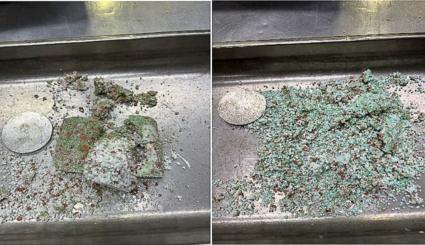Storing ESN on your farm over winter

With delayed harvests across Western Canada and the U.S. putting a kink in fall plans, many growers may find themselves out of time to fall-apply ESN. Even if you can’t get ESN in the field until spring, buying early is still recommended, and won’t come at the expense of your nitrogen quality thanks to ESN’s superior handling and storage abilities. If you’re thinking about storing ESN on-farm this winter, read on for a few of our top tips for overwinter storage.
Smarter Storage
In addition to its in-field performance, ESN holds a significant advantage over conventional nitrogen sources when it comes to storage. ESN won’t set up or degrade over the winter with proper handling and storage. ESN’s physical properties — lower angle of repose, low hygroscopicity, less bridging in the bin, more free-flowing than conventional fertilizers — result in several notable differences pertaining to storage and application.
One of the primary storage benefits of ESN is that it can be stored for longer periods of time than conventional fertilizers because it does not readily absorb moisture from the air and cake in the bin.
ESN vs. Urea Storage
With ESN, bin capacity will be less than for conventional urea, usually around 75% of urea capacity. However, ESN weighs approximately the same as urea at 48 pounds per cubic foot. The angle of repose on ESN is 19.6 degrees compared to 30 degrees for urea.
Top Storage Tips For Flat Surface Storage Sheds
- Bulkheads are recommended to prevent outward flow from bins, as ESN is more fluid than other dry fertilizers.
- Bin sidewalls should be reinforced concrete when possible or braced if older, weaker and/or wooden, to allow for pressure on sidewalls.
- Avoid storage of ESN in the same facility as ammonium nitrate.
Why ESN?
ESN pulls ahead of the competition from handling and storage to application and performance. As a responsive nitrogen source, ESN’s nitrogen release rate is controlled by soil temperature, one of the conditions that trigger plant growth. ESN can boost yields by an average of 5 to 10 percent – up to as much as 30 percent.
To learn more about ESN handling recommendations, click here.
To speak to your local ESN representative, click here.
For questions and comments, tweet us @SmartNitrogen.


